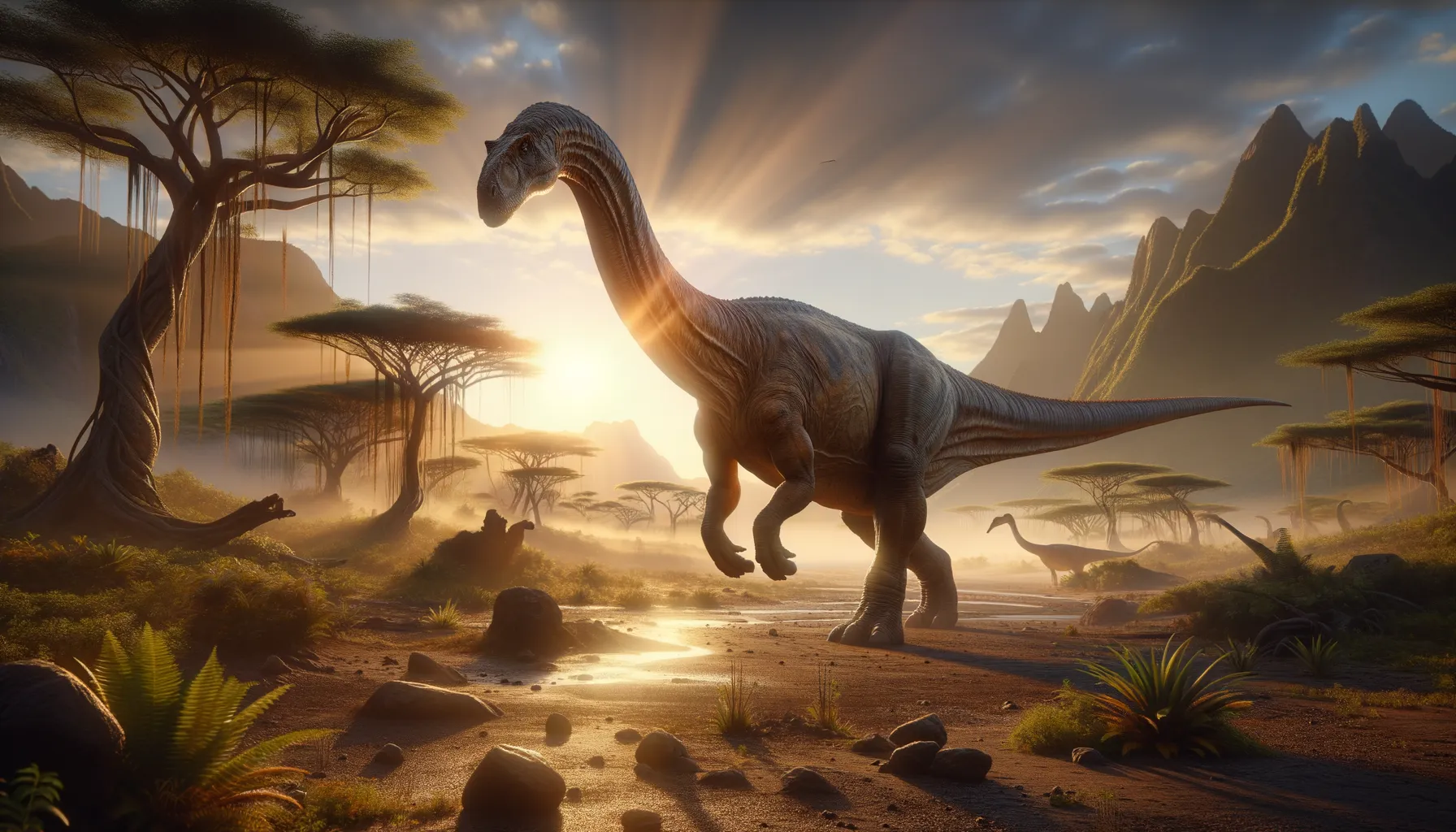
Jingshanosaurus
An early giant with a long legacy.
Period
Jurassic
Length
About 5 meters in length.
Height
Stood approximately 3.5 meters tall.
Weight
Estimated to weigh around 1,500 kg.
Jingshanosaurus was an early sauropodomorph dinosaur that roamed the Earth during the early Jurassic period. Known for its large size and long neck, it was a predecessor to the massive sauropods that dominated later in the Jurassic. Its fossils provide crucial insights into the evolution from bipedal to quadrupedal locomotion among dinosaurs, making it an important find for palaeontologists studying dinosaur evolution.
Diet
Jingshanosaurus was an herbivore, primarily feeding on ferns, cycads, and other prehistoric plants. Its long neck allowed it to reach vegetation that was high off the ground, extending its feeding range significantly.
Hunting
As a plant-eater, Jingshanosaurus did not hunt but instead browsed for vegetation. Its primary focus was on locating nutrient-rich plants to sustain its large body size.
Environmental challenges
Jingshanosaurus faced challenges from shifting climates and environments, as the Jurassic period featured significant changes in sea levels and vegetation. Predation threats from large carnivorous dinosaurs could have been a significant risk. Staying in groups might have offered some protection against predators.
Speed
Likely slow-moving due to its large body.
Lifespan
Lived around 10 to 20 years.
First discovery
Discovered in the Yunnan Province of China in the early 1990s.
Fun Facts
- Jingshanosaurus was a dinosaur that lived during the Early Jurassic period, around 200 million years ago.
- It was discovered in Yunnan Province, China, and named after a nearby Jingshan county.
- This dinosaur was a herbivore, meaning it primarily ate plants.
- One of the unique features of Jingshanosaurus is its long neck, which helped it reach vegetation high off the ground.
- Jingshanosaurus is believed to have been able to move on both two legs and four, much like modern-day kangaroos.
- Despite being a relatively large dinosaur, Jingshanosaurus is known from only one complete skeleton, a rare find in paleontology.
- The name 'Jingshanosaurus' means 'Jingshan lizard', reflecting its place of discovery.
Growth and Development
As a sauropodomorph, Jingshanosaurus grew rapidly to achieve its large size quickly. Its growth rates would have varied depending on the availability of food and environmental conditions. Juveniles were likely more nimble, progressively relying more on their sheer size as they matured.
Habitat
Jingshanosaurus inhabited forested areas and open plains with abundant vegetation to support its herbivorous diet. This dinosaur preferred regions with lush plant life, essential for sustaining its large dietary requirements. The habitat offered an array of ferns and cycads typical of the Jurassic landscape.
Interaction with other species
Jingshanosaurus likely lived alongside other early dinosaurs and prehistoric reptiles. It probably shared its habitat with other herbivores, possibly forming mixed herds for increased protection. Interaction with carnivorous dinosaurs was likely limited to avoiding predation.
Natural lifespan
In the wild, Jingshanosaurus could have lived for 10 to 20 years.
Reproduction
Jingshanosaurus reproduced by laying eggs, likely in nests. Eggs were probably laid in clutches, and some level of parental care might have been provided, at least in guarding the nest. Juveniles were much smaller and likely vulnerable until achieving greater size.
Social behaviour
Jingshanosaurus might have lived in groups or herds to enhance survival chances against predators. Such social structures may have helped in resource gathering and offered protection to younger or more vulnerable group members. Display behaviors during mating or social interaction could have included visual and vocal signals.
Fossil locations
Jingshanosaurus fossils were predominantly found in China's Yunnan Province. The discovery of complete skeletons offers a comprehensive understanding of this dinosaur's structure and lifestyle. These fossil sites have provided a significant number of specimens, enabling detailed studies and analyses.
